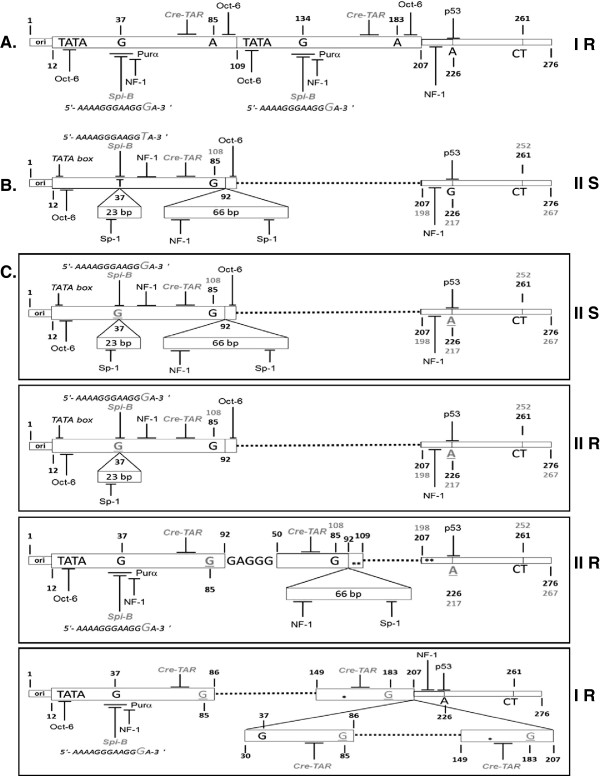Figure 3.
JCPyV NCCR sequence analysis in 21 MS and 18 CD patients. (A.) Type IR has repeats of 98bp unit, also known as sequence composed by boxA (25 bp), boxC (55 bp) and boxE (18 bp), as seen in the JCPyV prototype Mad-1 [35,36], without 23- and/or 66-bp inserts, also known as boxB and boxD respectively. (B.) Type IIS has a single 98 bp unit, with one 23- and one 66-bp insert, as seen in the archetype CY [35,38]. The NCCR type IIS is also known as sequence composed by boxes A, B, C, D and E. Each 98bp unit is represented by an open box. The 23 bp and 66 bp inserts are represented as open boxes labeled “23 bp” and “66 bp,” respectively. The nucleotide numbering of Mad-1 NCCR is indicated in black bold font, whereas the nucleotide numbering of CY NCCR is reported in grey bold font. In all NCCR sequences is present a 69 bp sequence, called box F, starting from nucleotide 207. (C.) A NCCR Type IIS was found in 8/28 plasma, 7/21 ileal and 5/16 colon-rectal biopsies, collected from CD patients. A NCCR Type IIR with a boxD deletion was found in 4/21 ileal and 1/16 colon-rectal biopsies. Another NCCR Type IIR, composed by a duplication of a 98 bp unit and a 66 bp insert, was found in 2/3 PBMCs of 2 MS patients. Finally, a NCCR Type IR sequence was found in 2/16 colon-rectal biopsies. Dotted lines represent deletions or regions not present. Asterisks represent single nucleotide point mutations or deletions. Black bold letters indicate nucleotides and underlined letters in grey bold font indicate the relative point mutations. The types of NCCR are indicated. The main cellular factor binding sites are also reported. Ori: replication’s origin.

